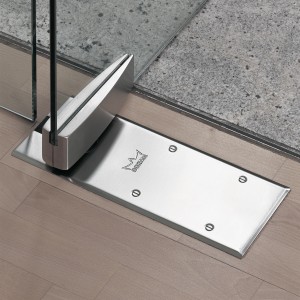 I feel like, during the past few months, I’ve given door closers quite a bit of love here on LockBytes. Once underappreciated, I conquered my task of bringing the topic of door closers to the forefront.
I feel like, during the past few months, I’ve given door closers quite a bit of love here on LockBytes. Once underappreciated, I conquered my task of bringing the topic of door closers to the forefront.
(Just let me believe what I believe, ok?)
Now, though, let’s turn our attention to the even less appreciated floor closers!
I’m going to be honest. I didn’t even know what one was before I started here. (I feel like I say that a lot.) In fact, when I finally did see one I said, “Oh! That’s what that little rectangular piece of metal is hiding!”
In my head, it was just there for aesthetic purposes.
Turns out, it totally has a functional job! Allow me to explain.
Floor Closers: The Basics
Location
Unlike door closers, floor closers are never actually visible to the average patron. Like me, they probably think it’s just a piece of metal on the ground and not put much more thought into it.
Actually, floor closers are concealed within the floor. Glass doors are amongst the few doors that aren’t able to have the standard door closers. There’s no way to attach a door closer to a glass door but you would take a risk if that door had a tendency to slam shut.
However, they’re also sometimes used simply for aesthetic reasons, if someone wants to avoid the bulky look of a door closer attached to their door.
Perfect for Oversized Doors
Because floor closers are located within the floor, they can withstand much more weight than a door closer. This makes them perfect for oversized doors, where door closers typically don’t work. The arms of door closers aren’t strong enough to hold the weight of the door open and eventually, the arm of the closer endures so much weight, the closer will fail.
With a floor closer being underneath the door, it makes it much more capable of bracing under the weight of the door.
Installation
The big catch with floor closers (that isn’t really a “catch” at all) is that they have to be installed during new construction. The concrete around the door has to be cut out to place the closer within the concrete. The closer has to be installed where the door pivots and this allows it to carry the weight of the door.
If you chose to install a floor closer after the building has been built, you would have to remove the door, cut out the area of concrete where the floor closer would go and then install the door on top of the closer. The costs of that will quickly add up which is why it’s best to go ahead and get your floor closers installed during new construction.
Have a new building going up and are considering floor closers? Give us a shout. We’ll be more than happy to help.
